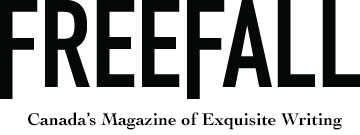Micheline Maylor
A Review of
Blue Sonoma
By Jane Munro
Brick Books
$20.00
ISBN: 978-1-926829-88-3
Blue Sonoma is a collection that begins with a mantra and becomes a study of images, illness, and landscape. Poet, Jane Munro, in her sixth collection, does this without a twinge of nostalgia, but claims observance through immediacy and wonder. In this, Munro claims her skill as poetic observer. She studies Japanese forms actively and we see the results in her clean attentive images, bare of superfluous detail.
In the section “Darkling”, about her partner’s descent into Alzheimer’s, we see meditative simplicity reflected in the question about relationship.
Mallard above. Mallard below. Two green, iridescent necks,
one reaching up, one down. Two curls on two tails.
And us, were we substance or reflection?
Moon boat sailing high. (28)
With precision the poet answers the question using the image of moon as both object of substance and reflection. In this way Munro manipulates the words to entrance and delight. Exacting syntax building image is a habit she maintains throughout the book and her skills are exemplary.
Munro’s pedigree is long reaching and admirable, having studied with Warren Tallman, Robin Blaser, Don McKay, and Jan Zwicky. Her attention to comparative structures in poetry, and daily meditative practice manifest in the poems such as “Frog”, where the accumulation of the metaphor of the “Blue Sonoma” as experiential space for ailment and withdraw become “Basho-ized”. Munro uses vehicle and tenor to connect the metaphor to her own heart.
There is a frog
in one piston
of a crankcase.
It has the power to clean
the chamber
in which it hibernates.
It eats in its sleep, delicately
scraping the walls
with its feet.
I feel it kick in me. (32)
The best metaphor draws attention to things that are believable and held in tension, but Munro deepens the connection in an unexpected way and connects more than two parallels. Munro is aware of the sense of layered meaning and implied danger that is apparent between these objects. Consider the description of her partner as the road that nearly killed him, and in turn carries further implied danger:
Before we met, while driving cab,
he broke his neck. It rewelded
off-kilter: head stuck forward.
Six years later, it’s that jut I suddenly see ahead. (13)
If a poet’s job is to find the right word, then “jut” is only word that layers the road/neck in this way. Through a dream telling, Munro further displays her skills as poet with capacity for narrative tension. The result is visceral and danger apparent.
I was on a bus
for a long ride –
the Lions Gate Bridge
(a conveyor belt),
the North Shore Mountains
(loaves of bread).
I was tired. I made a bed
on the back bench. In the aisle
there was a bucket of water
and floating in it
a doll’s fancy dress, no more
than twelve inches long. It seemed
that someone was inside, but, no –
it was only a dress. A lanky man
ogled it and smacked his lips.
What have we here? (34)
The back blurb on Blue Sonoma claims, “Jane Munro draws on her well-honed talents to address what T.S. Eliot called “the gifts reserved for age”. Munro’s elegance and deft manipulation of line and craft certainly demonstrates a skilled hand, one of the long practiced and well thought. It is easy to learn from Munro’s craft, as much as it is to enjoy it.
This review is exclusive FreeFall Blog content.

